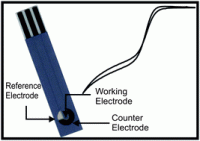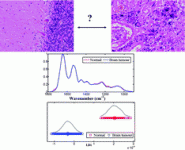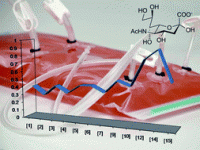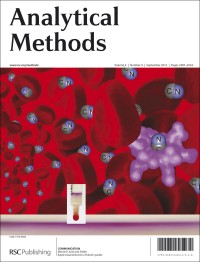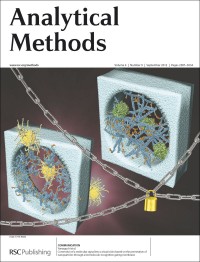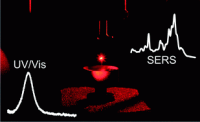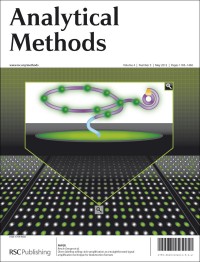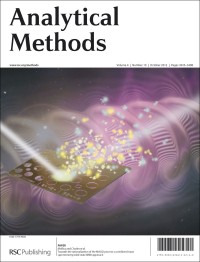
Front cover: Major et al., Anal. Methods, 2012, 4, 3118-3126
The latest issue of Analytical Methods is now available, and we have three covers this month.
On the front cover, Giulia Mollica, Laurence Charles and colleagues from CNRS, Marseille, France, use solid-state NMR to obtain essential information to understand the molecular origin of changes observed in MALDI mass spectra as a function of experimental conditions used for sample preparation.
Towards the rationalization of the MALDI process: a combined mass spectrometry/solid-state NMR approach
Yannis Major, Hélène Pizzala, Fabio Ziarelli, Trang N. T. Phan, Giulia Mollica and Laurence Charles
Anal. Methods , 2012, 4, 3118-3126
DOI: 10.1039/C2AY25708D
On the inside front cover, Luis Alamo-Nole and co-workers at the University of Puerto Rico, Mayaguez, USA, present a size-exclusion method that was developed for the separation of thiol-capped Cd(Se,S) quantum dots (QDs) synthesized in the aqueous phase, which is fast and reproducible.
Preparative size-exclusion chromatography for separation and purification of water-stable Cd-based quantum dots
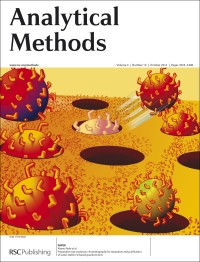
Inside front cover: Alamo-Nole et al., Anal. Methods, 2012, 4, 3127-3132
Luis Alamo-Nole, Sonia Bailon-Ruiz, Oscar Perales-Perez and Felix R. Roman
Anal. Methods , 2012, 4, 3127-3132
DOI: 10.1039/C2AY25629K
On the back cover, Zhang-Jun Hu and co-authors from Tongji University, Shanghai, China, have fabricated magnetic microspheres which capture lead ions rapidly and selectively from aqueous solution so that facile onsite preconcentration and monitoring of lead ions at trace level is possible.
Well-defined surface ion-imprinted magnetic microspheres for facile onsite monitoring of lead ions at trace level in water
Yang Cui, Jia-Qi Liu, Zhang-Jun Hu, Xia-Wei Xu and Hong-Wen Gao
Anal. Methods , 2012, 4, 3095-3097
DOI: 10.1039/C2AY25656H
All these cover articles will be free to access for 6 weeks – don’t forget to also take a look at the HOT articles featured in Issue 10.
There are also two review articles in this issue, which will be free to access until 19 October:
Minireview: Artificial sweeteners as emerging pollutants in the environment: analytical methodologies and environmental impact
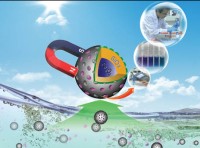
Back cover: Cui et al., Anal. Methods, 2012, 4, 3095-3097
Maroula G. Kokotou, Alexandros G. Asimakopoulos and Nikolaos S. Thomaidis
Anal. Methods, 2012, 4, 3057-3070
DOI: 10.1039/C2AY05950A
Food analysis – samples preparation and chromatographic methods in determination of selected biogenic amines, methylxanthines and water-soluble vitamins
Joanna Płonka
Anal. Methods, 2012, 4, 3071-3094
DOI: 10.1039/C2AY25706H

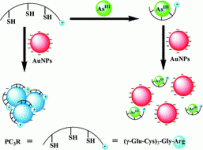 Researchers from Central South University, Changsha, Hunan and Anyang Normal University, Anyang, Henan, China report a simple, rapid and selective colorimetric visualization of arsenic using unmodified gold nanoparticles (AuNPs) and a phytochelatin-like peptide.
Researchers from Central South University, Changsha, Hunan and Anyang Normal University, Anyang, Henan, China report a simple, rapid and selective colorimetric visualization of arsenic using unmodified gold nanoparticles (AuNPs) and a phytochelatin-like peptide.










